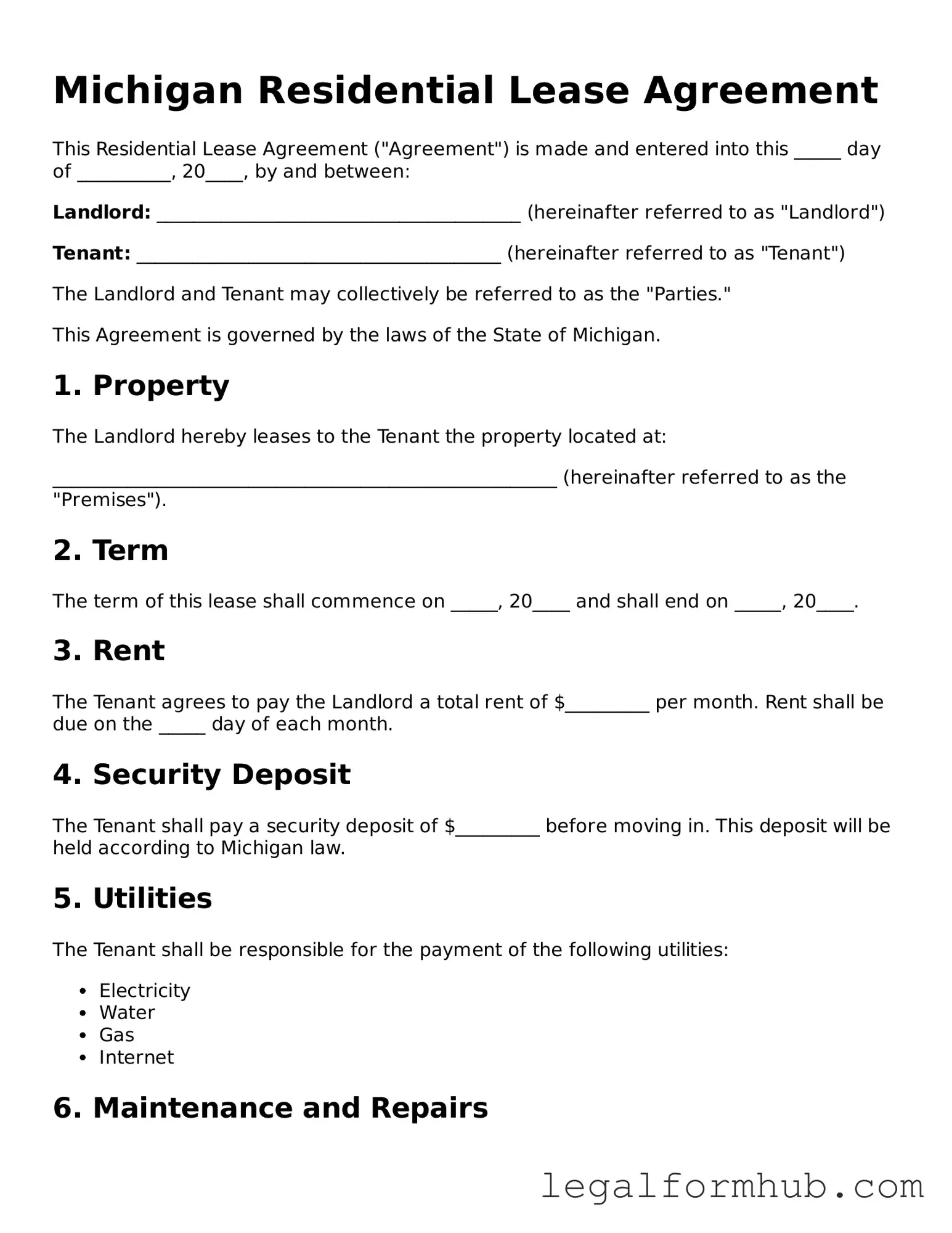The Michigan Commercial Lease Agreement is similar to the Residential Lease Agreement in that both documents outline the terms and conditions under which a property is rented. While the Residential Lease focuses on residential properties, the Commercial Lease is tailored for business spaces. Both agreements typically include details about the rental amount, duration of the lease, and responsibilities of both the landlord and tenant. They serve to protect the interests of both parties and ensure clarity regarding the use of the property.
The Michigan Rental Application is another document that complements the Residential Lease Agreement. This application is often completed by prospective tenants before signing a lease. It collects personal information, rental history, and employment details to help landlords assess the suitability of applicants. The information gathered through the rental application can influence the decision to enter into a lease agreement.
The Michigan Lease Agreement is an important legal document that clarifies the relationship between landlords and tenants, specifying the terms of occupancy, rent obligations, and property maintenance. Properly addressing all lease details helps avoid misunderstandings and creates a stable living situation. To further ensure clarity when dealing with rental properties, you can also utilize forms like the Fill PDF Forms for additional documentation needed in the leasing process.
The Michigan Security Deposit Receipt is closely related to the Residential Lease Agreement as it documents the amount of security deposit collected from the tenant. This receipt is important for both parties, as it provides proof of payment and outlines the conditions under which the deposit may be withheld or returned. It helps to prevent disputes regarding the handling of the security deposit at the end of the tenancy.
The Michigan Move-In Checklist is a practical document that often accompanies the Residential Lease Agreement. It allows tenants and landlords to record the condition of the property at the time of move-in. This checklist helps to ensure that both parties agree on the state of the property, which can be crucial when determining any damages or necessary repairs when the lease ends.
The Michigan Notice to Quit is a document that may be used in conjunction with the Residential Lease Agreement when a landlord needs to terminate the lease. This notice informs the tenant that they must vacate the premises by a specified date. It outlines the reasons for termination, which could include non-payment of rent or violation of lease terms. This document is essential for landlords seeking to legally reclaim their property.
The Michigan Lease Renewal Agreement is similar to the Residential Lease Agreement, as it allows for the continuation of the lease under the same or modified terms. This document is used when both parties agree to extend the lease beyond its original term. It helps to formalize the new agreement and ensures that both the landlord and tenant understand their ongoing rights and obligations.
The Michigan Pet Agreement can be associated with the Residential Lease Agreement when a tenant wishes to have pets in a rental property. This document outlines the specific rules and responsibilities regarding pet ownership, including any additional fees or deposits required. It protects the landlord’s property while allowing tenants to enjoy pet ownership within the agreed-upon parameters.
The Michigan Sublease Agreement is another related document that may be used when a tenant wishes to rent out their leased property to another individual. This agreement must align with the original Residential Lease Agreement and often requires the landlord's approval. It details the terms of the sublease, including rent amount and duration, ensuring that all parties are aware of their rights and responsibilities.
The Michigan Termination Agreement is relevant when a tenant and landlord mutually agree to end the lease before its original expiration date. This document outlines the terms of the termination, including any conditions that must be met. It helps to provide clarity and protect the interests of both parties during the lease conclusion process.
